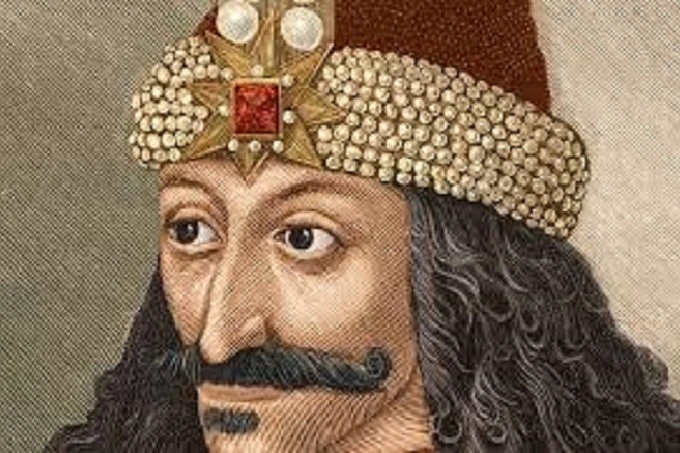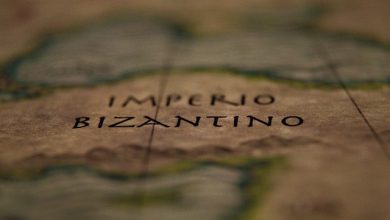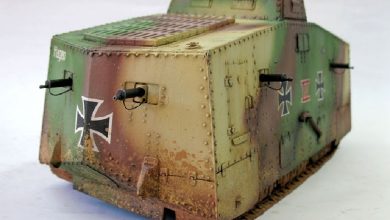Vlad the Impaler: how the bloodthirsty Dracula fought and surpassed his enemies

Because of the stories surrounding his name, Vlad the Impaler is usually always distinguished from other characters living throughout the Middle Ages. A prominent political figure in Europe during the 15th century who was victorious in more than one war, he was renowned for the brutal manner in which he dealt with his enemies. The story of how the bloodthirsty Dracula won in his military campaigns, gaining the upper hand over his rivals and enemies.
Early years
His early years provided Vlad with his first opportunity to gain expertise in the military. At the court of his father, Vlad II Dracul, he was educated in the fundamentals of war. Following his father’s ascension to the throne of Wallachia, Vlad Tepes resumed his education at the court of Sultan Murad II of the Ottoman Empire. He and his younger brother Radu were held hostage in this location to gain their father’s loyalty. In addition to his training in the military, Vlad was exposed to people from various cultures, such as Germans and Hungarians, which contributed to his development of a deeper knowledge and greater life experience.
During his battle for the throne of Wallachia, he obtained additional experience that he could put into practice. In 1448, following the assassination of his older brother and father in 1447, Vlad returned to his homeland accompanied by a troop of Ottoman cavalry. He could ascend to the throne with their assistance, but only for a little time. The local nobles did not support his claims and were antagonistic against the Ottomans. As a result, they easily deposed him. Between 1449 and 1451, he sought safety in Moldavia at the court of Bogdan II. While there, he gained a strategic understanding of his neighbouring countries, which at the time included Poland, Moldavia, and the Ottoman Empire. This knowledge will be useful in the upcoming campaigns he will engage in, so be sure to save it.
Military campaigns
The campaign for the throne of Wallachia was the most significant one that took place during his reign and was successful. This began in 1448 and continued until the year he passed away, as was described above. In 1456, to prepare for his anti-Ottoman campaign in Belgrade, John Hunyadi gave Vlad the Impaler command of a military force to defend the mountain passes between Wallachia and Transylvania while he was away with the main army. While John Hunyadi was away with the main army, Vlad the Impaler was in charge of protecting the mountain passes. In the same year, Vlad used this opening to reclaim his rightful place on the throne.
Because of his achievements, he and the opposing nobility were drawn into a civil war against one another. He had no choice but to put an end to entire noble families to solidify his power and eliminate any potential rivals. He assisted his cousin Stephen the Great in ascending to the throne of Moldavia while holding the throne in his hands. After that, during the years 1457 and 1459, he engaged in skirmishes with other claimants, ravaging and pillaging villages and towns in the region of Transylvania.
His second reign was the longest and lasted until 1462, when Matthias I, King of Hungary, imprisoned him on false charges. He was kept as a prisoner in Visegrad until 1474. He regained the throne, but he was killed fighting against the nobility the same year. Another campaign that made Vlad the Impaler famous was his role in the crusades against the Turks in the fifteenth century, called the late crusades. After turning Serbia into a pashalik, Pope Pius II organized a crusade against the Ottoman Empire. Aware of the Ottoman threat to Wallachia and his limited military power, Vlad seized the opportunity to join the pope’s campaign.
Between 1461-1462 he attacked several key Ottoman positions south of the Danube to weaken their defences and stop their advance. This led to an invasion led by Sultan Mehmed II in June 1462 to turn Wallachia into another pashalik. Outnumbered, Vlad organized a night attack while the Ottoman army was encamped near Târgoviște. Despite failing in his initial attempt to assassinate the Sultan, Vlad’s strategy created enough chaos to stop his enemies’ advance.
Great strategist
Asymmetrical warfare is a term that can be used to describe the Wallachian approach that was used throughout the fifteenth century. In every battle, Vlad the Impaler and his fellow Romanian rulers faced an enemy with a numerical advantage (e.g., Ottoman Empire, Poland). As a direct consequence, they were forced to implement tactics that would reduce the impact of their superior numerical strength. For instance, they will employ topographical tactics, such as sneaking through mountain passes, making use of fog and swamps, or launching surprise attacks. In the open field, we managed to avoid colliding with anyone or anything. Impalement was another method that Vlad used to damage the morale of his enemies.
Vlad’s unconventional strategy during the war included the following: first, he withdrew his forces so that they would not have to fight the enemy in the open field. After that, he dispatched men to set fire to the surrounding areas and communities. The smoke and the heat caused a significant slowdown in the progression of the enemies’ advance. In order to further debilitate the opposition, Vlad’s soldiers also left behind several dead animals and corpses. Additionally, fountains were laced with a cadaveric poison, typically done with the remains of animals killed.
The second thing that Vlad did was send his light cavalry to flank the opposing army both during the day and at night, which caused the enemy army even more casualties. The dispute was resolved once and for all by an open confrontation. Three different outcomes may have occurred. At the first possible outcome, the Wallachian army decided to fight in a certain location. The second possible result includes an unexpected assault. In the ultimate scenario, the conflict had to take place on the ground, hostile to the adversary on both sides of the war.
Army and weapons
The infantry, artillery, and cavalry were the three primary branches of the Wallachian armed forces. In this particular instance, the voivode, known as Vlad, commanded the army and picked its commanders. The heavy and light cavalry were Wallachia’s primary fighting forces. This was due to the country’s predominately agricultural nature. A great army and a smaller army were both components of the army. The smaller army consisted of ten to twelve thousand troops and was comprised of members of the nobility, their sons, and courtiers (forty thousand soldiers, mostly mercenaries).
Most of the army was comprised of light cavalry, who could have been either natives or mercenaries. Because of the terrain and the limited number of fortresses across Wallachia, heavy cavalry and infantry only made up a small portion of the total armed forces. The Wallachian army’s troops very occasionally utilized artillery. Mercenaries, on the other hand, made extensive use of them.
Medieval church paintings, letters, and comparisons conducted with the militaries of other nearby countries are the primary sources of information regarding the weapons used by Vlad the Impaler’s army. To begin, the heavy cavalry utilized gear comparable to that utilized by other cavalry forces in Central and Western Europe. This consisted of spears, swords, maces, and shields along with various armour and weapons such as helmets, chainmail, plate, or oriental armour.
The fact that equipment belonging to the Ottomans and the Hungarians was found, despite the absence of workshops, is evidence that the arms and armour were either purchased or looted during raids. Second, the infantry wore various armour, ranging from gambesons to chainmail and everything in between. In addition, a wide selection of weapons, including lances, spears, halberds, arrows, crossbows, shields, axes, and swords of varying varieties. Tents, pavilions, artillery weaponry, and instruments like trumpets and drums used to communicate and coordinate the army were some of the many available forms of equipment.




